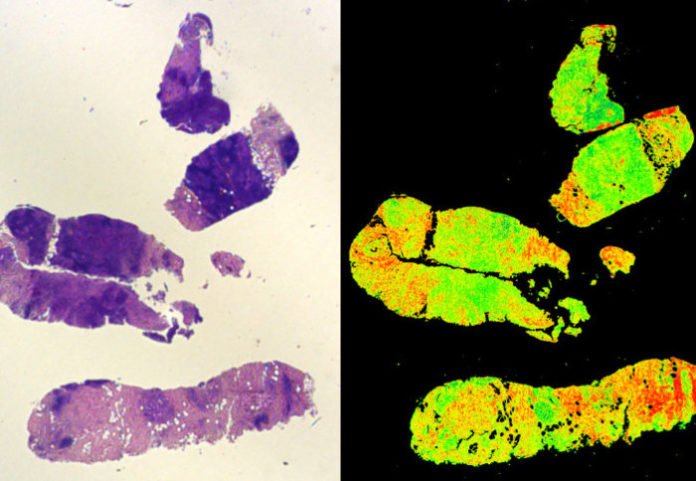Scientists led by the Department of Physics and the Department of Surgery and Cancer at Imperial College London have developed a cutting-edge technology to grade tumor biopsies. This technology can eradicate human subjectivity and ensuring patients get the right treatment.
Scientists dubbed this technology as digistain technology. In this method, they particularly looked for ‘H+E stained’ sample under a microscope and then judge the severity of the disease by eye alone. Most of the treatment choices must be founded on this ‘reviewing’ process, yet it is notable that distinctive professionals given a similar cut will just concur on its review around 70% of the time, bringing about an overtreatment issue.
The team’s new ‘Digistain’ technology addresses this problem by using invisible mid-infrared light to photograph the tissue slices in a way that maps out the chemical changes that signal the onset of cancer. In particular, they measure the ‘nuclear-to-cytoplasmic-ratio’ (NCR): a recognized biological marker for a wide range of cancers.
During an experiment, scientists carried out a twofold visually impaired clinical pilot trial utilizing two contiguous cuts taken from 75 bosom tumor biopsies. The primary cut was evaluated by clinicians, of course, utilizing the standard H+E convention. It was likewise used to distinguish the alleged ‘Region of interest’ (RoI), i.e. the piece of the cut containing the tumor.
The team then used the Digistain imager to get a DI value averaged over the corresponding RoI on the other, unstained slice and ran a statistical analysis on the results.
Lead author Professor Chris Phillips, from the Department of Physics at Imperial, said: “Our machine gives a quantitative ‘Digistain index’ (DI) score, corresponding to the NCR, and this study shows that it is an extremely reliable indicator of the degree of progression of the disease. Because it is based on a physical measurement, rather than a human judgment, it promises to remove the element of chance in cancer diagnosis. “
“Even with this modest number of samples, the correlation we saw between the DI score and the H+E grade would only happen by chance 1 time in 1400 trials. The strength of this correlation makes us extremely optimistic that Digistain will be able to eliminate subjectivity and variability in biopsy grading.”
At a practical level, the researchers say that the Digistain imaging technology can easily and cheaply be incorporated into existing hospital labs, and be used by their staff. Professor Philips added: “It’s easy to prove its worth by checking it with the thousands of existing biopsy specimens that are already held in hospital archives. Together these facts will smooth the path into the clinic, and it could be saving lives in only a couple of years.”
